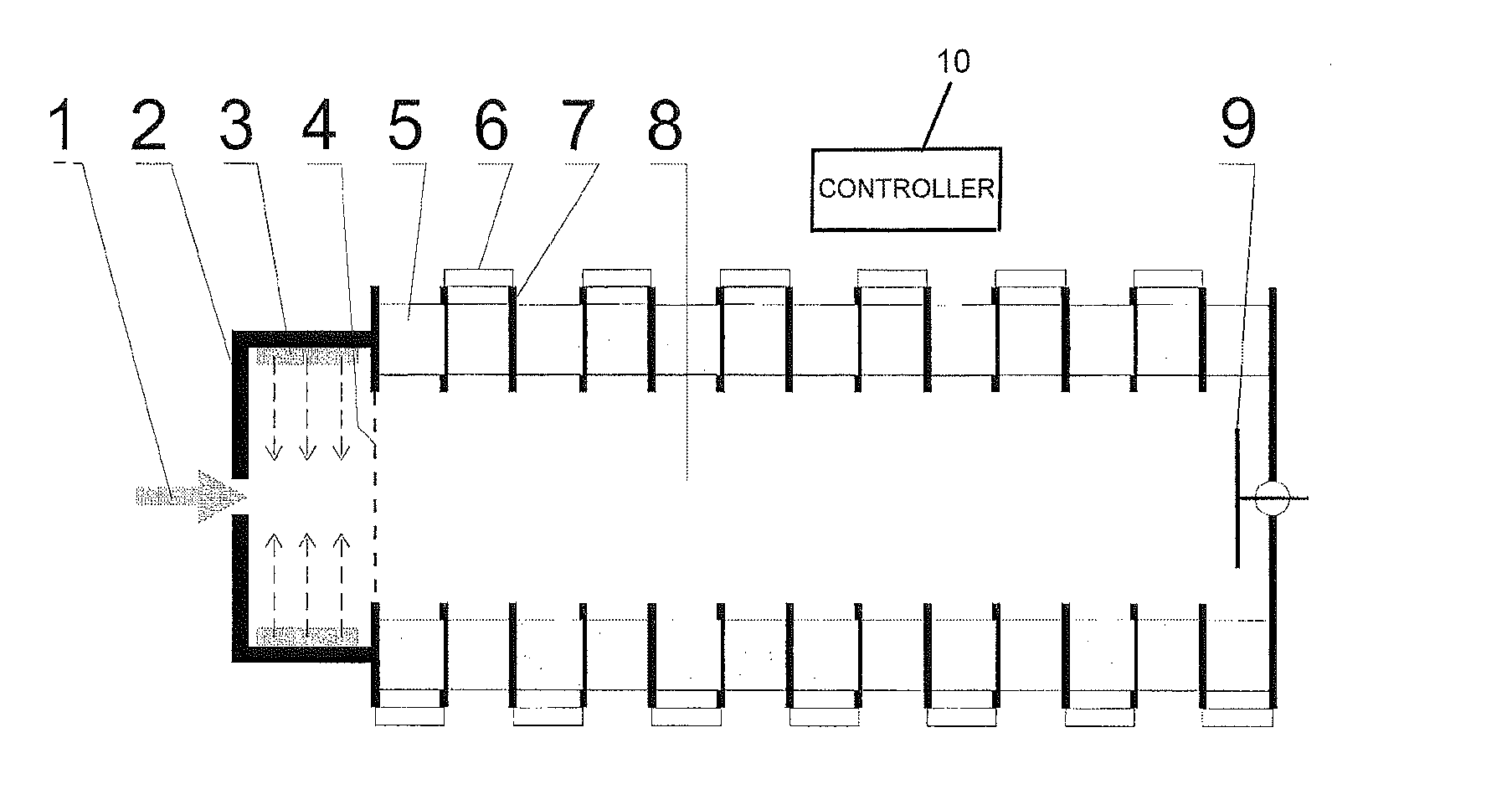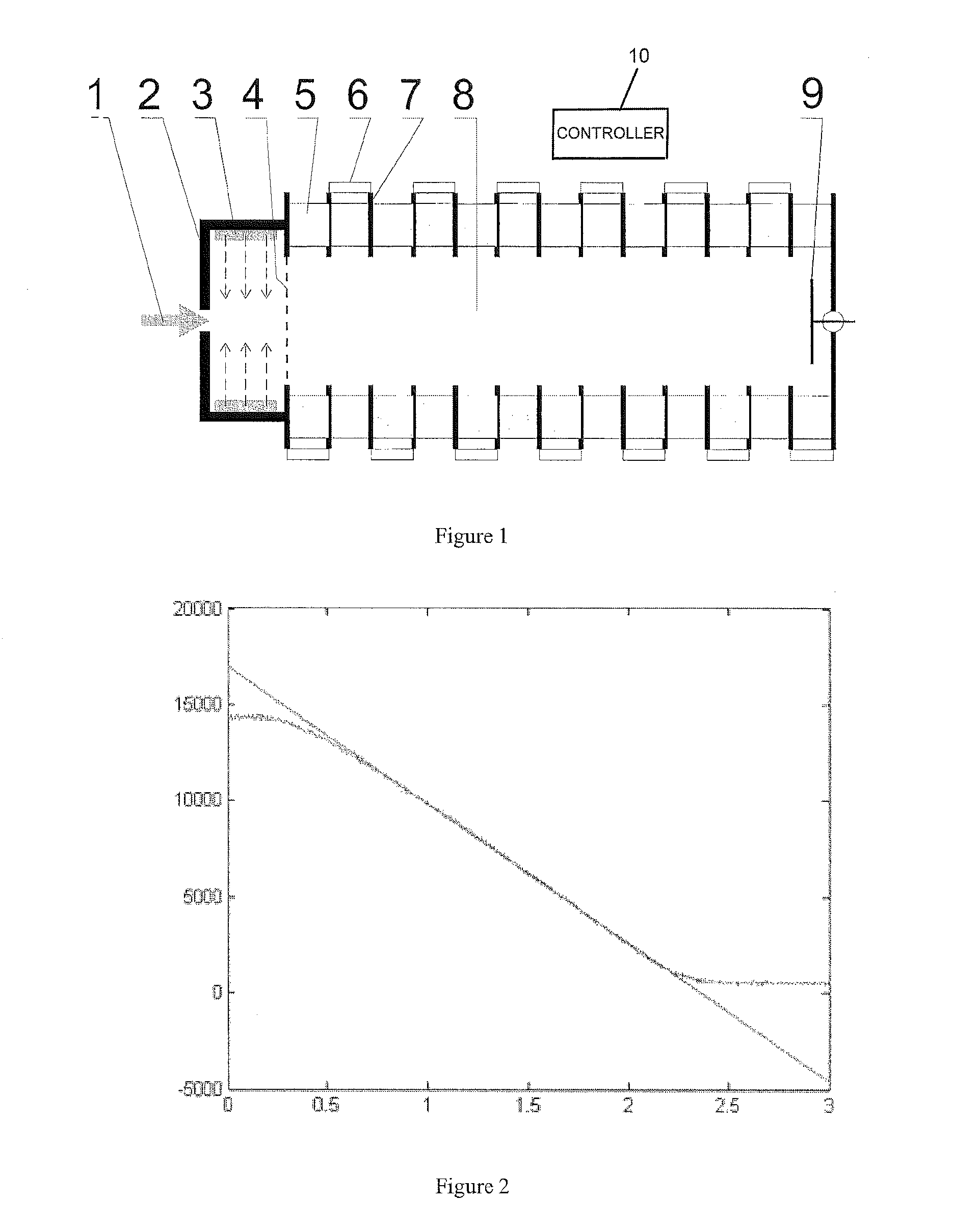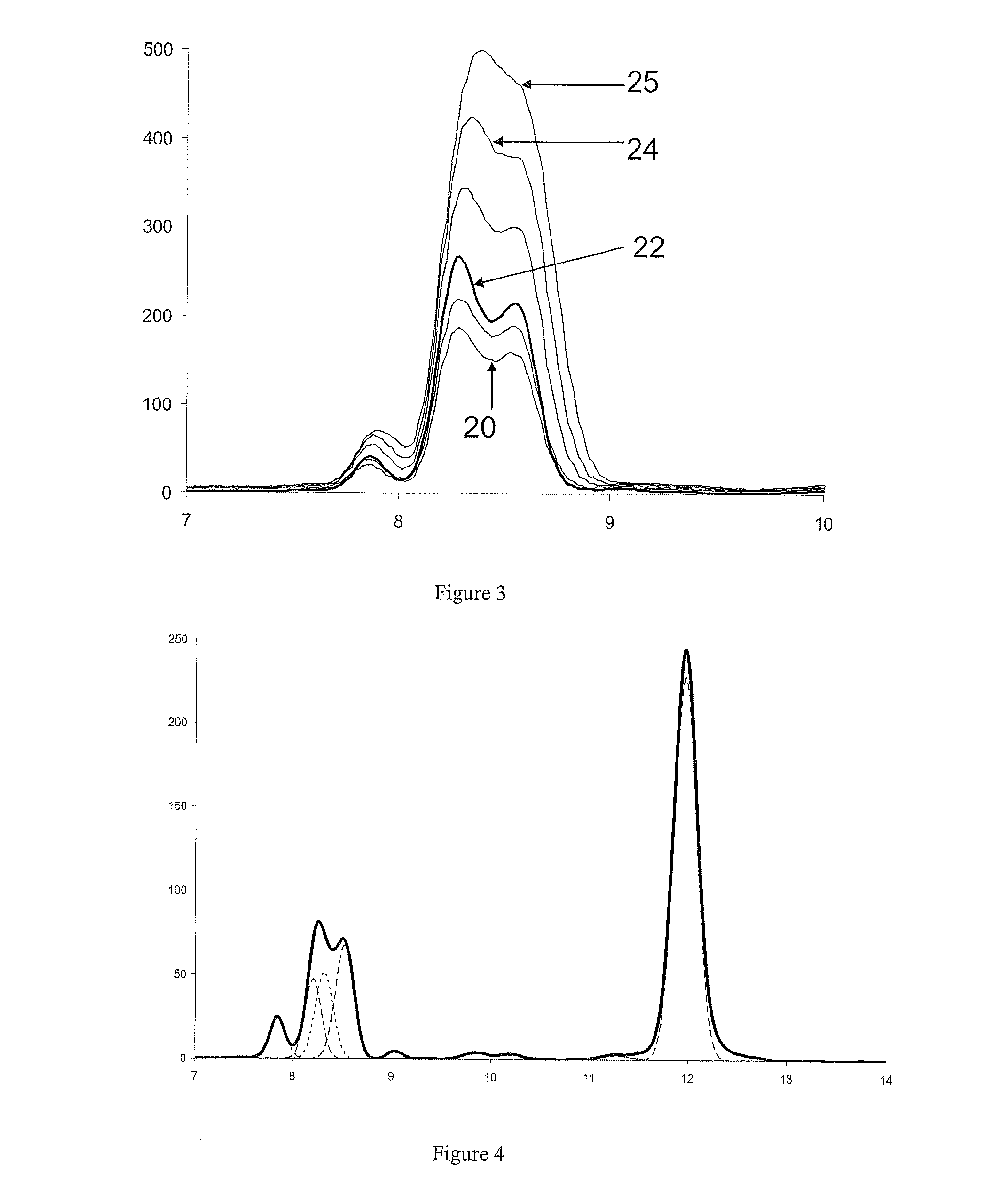Measurement of ion mobility spectra
a technology of mobility spectra and measurement method, which is applied in the field of measuring the mobility spectra of ions, can solve the problems of inability to accept the method, the evaluation procedure using the fourier transformation does not work stably for a noisy detector signal, and the expectation of increasing the signal-to-noise ratio has been disappointing. , to achieve the effect of improving the signal-to-noise ratio, high mobility resolution and strong nois
- Summary
- Abstract
- Description
- Claims
- Application Information
AI Technical Summary
Benefits of technology
Problems solved by technology
Method used
Image
Examples
Embodiment Construction
[0032]Referring to FIG. 1, a system of the present invention analog-modulates the ion current from the ion source with a continuous modulation function with an instantaneous frequency varying over a wide frequency range, and decodes the resulting ion current signal at the detector by a correlation with the modulation function. This results in a relatively noise-free mobility spectrum with good mobility resolution. The modulation function may be a linear or nonlinear chirp. The evaluation procedure is extraordinarily stable.
[0033]This type of modulation (from the Latin “modulari”—to measure, control, regulate) differs from the modulation familiar from communications technology, which is used to modulate the amplitude, frequency or (more rarely) phase of a generally high-frequency carrier signal with a transported signal. The signal is then contained in the amplitude changes, in the frequency changes or (usually for digital signals only) in the phase shifts of the high-frequency carri...
PUM
 Login to View More
Login to View More Abstract
Description
Claims
Application Information
 Login to View More
Login to View More - R&D
- Intellectual Property
- Life Sciences
- Materials
- Tech Scout
- Unparalleled Data Quality
- Higher Quality Content
- 60% Fewer Hallucinations
Browse by: Latest US Patents, China's latest patents, Technical Efficacy Thesaurus, Application Domain, Technology Topic, Popular Technical Reports.
© 2025 PatSnap. All rights reserved.Legal|Privacy policy|Modern Slavery Act Transparency Statement|Sitemap|About US| Contact US: help@patsnap.com



